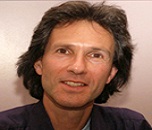
Constantinos Sioutas
University of Southern California, USA
Title: Physical, chemical and toxicological characteristics and historical trends of ultrafine particulate matter from traffic emissions in the Mega City of Los Angeles
Biography
Biography: Constantinos Sioutas
Abstract
To determine the organic constituents of ambient ultrafine particles (<0.18 um) and quantify the source contributions to PM0.18 organic carbon (OC), a sampling campaign was conducted at Central Los Angeles (LA) from 2012-2013. A novel hybrid molecular marker-chemical mass balance model was introduced and applied to estimate the contributions from mobile sources (including gasoline, diesel, and smoking vehicles), wood smoke, primary biogenic sources, and anthropogenic secondary organic carbon. Based
on the model output, a 57% decrease in contribution of mobile sources to the total OC from 2009 to 2013 was estimated. Comparison to previous studies in Central LA indicated significant reduction in concentrations of carbonaceous species such as polycyclic aromatic hydrocarbons druing the past decade. The analysis of historical trends in ambient PM oxidative potential measured by dithiothreitol (DTT) assay enabled us to assess the relative importance of tailpipe and non-tailpipe emissions on DTT activity in this area. Ambient PM0.18, the toxicity of which was found to be mainly dominated by tailpipe emissions, showed a consistent decrease in DTT activity levels in the past decade, likely due to major reductions in tailpipe emissions as a result of stringent regulations on mobile sources in the LA basin. Despite major reduction in ambient PM2.5 levels and vehicle tailpipe emissions, a slight but consistent increase in
the DTT redox activity of larger particles (PM2.5) was observed in the past decade. A follow-up on-road sampling campaign was conducted using a mobile instrumentation platform on major freeways of Los Angeles revealed the important role of both tailpipe and non-tailpipe traffic emissions on the overall oxidative potential of PM2.5. Increased contributions of certain groups of metals and trace elements that are indicators of non-tailpipe emissions compared to previous studies provide evidence on the increasing importance of non-tailpipe emissions to the oxidative potential of on-road PM2.5 as vehicule tailpipe emissions becomes cleaner.

